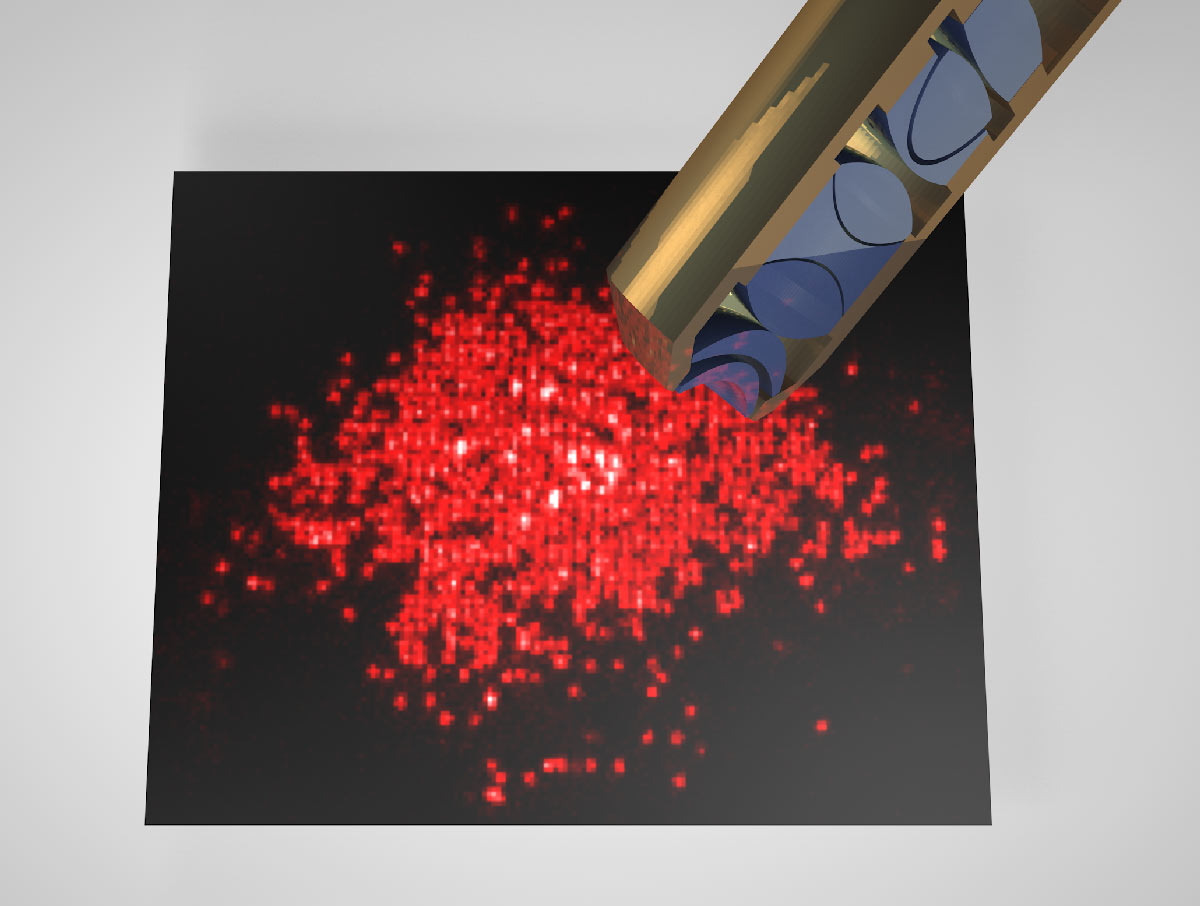Fermionic Quantum Gas Microscope
Joannis Koepsell – Hector Fellow Immanuel Bloch
The microscopic description of a multitude of exotic phenomena such as magnetism or high-temperature superconductivity still raises questions. This project deals with the simulation of these phenomena using a quantum gas microscope. In this project, ultracold fermionic lithium atoms are made to behave identically to electrons in a solid state by controlled optical light fields. By using a high-resolution fluorescence image, the behaviour of each individual atom can be observed.
A rich variety of phenomena in solid state systems such as quantum magnetism or high temperature superconductivity still pose open questions on parts of their microscopic explanation. Due to the complexity of these systems, the underlying quantum many-body dynamics is often not accessible to computational simulation. Fermionic Quantum Gas Microscopes resolve the spin and density of single lattice sites in quantum gas experiments and represent an novel platform to simulate condensed matter phenomena. In these experiments, atoms cooled to the quantum regime are manipulated by light fields to generate optical lattices and finally mimic solid state systems in which the interacting fermionic atoms replace the electrons.
This project is carried out in the Lithium Quantum Gas Microscope experiment of Hector Fellow Immanuel Bloch. It aims at moving towards quantum simulation of the Fermi Hubbard model, topological edge states in superlattices and the Fulde-Ferrell-Larkin-Ovchinnikov phase in spin imbalanced systems. Our setup has the unique feature to simultaneously resolve spins, doubly occupied sites and holes at the same time. Recently, one of the first single site resolved images of fermionic atoms in optical lattices was realized. A new superlattice generation will be implemented to reach lower entropies, increase the system size and to reach higher energy scales.

Single site resolved image of Lithium atoms in an optical lattice shown with an artistic view of the microscope
Joannis Koepsell
Ludwig Maximilian University of MunichSupervised by

Immanuel Bloch
Physics Hector Fellow since 2012
Hector Fellow since 2012

